|
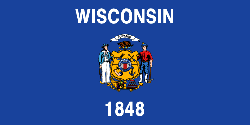 |
|
Wisconsin was the 30th State in the U.S.; it
became a state on May 29, 1848 |
| State Capital
- Madison |
| Largest City
- Milwaukee |
Area -
65,503 square miles
23rd biggest state in the USA |
| Population
- 5,363,675 (as of 2000) Wisconsin is the 18th most populous
state in the USA |
| Major Rivers
- Wisconsin, Mississippi, St. Croix, Chippewa |
| Major Lakes
- Lake Michigan, Lake Superior, Lake Winnebago |
| State Nickname
- Badger State |
| State Motto -
"Forwaard" |
| State Flower
- Wood Violet |
| State Bird -
Robin |
| State Tree -
Sugar Maple |
| |
| |
| |
| |
| |
| |
| |
|
|
|
Governor Doyle Announces
UW-Madison Awarded
National Alzheimer’s Research Center |
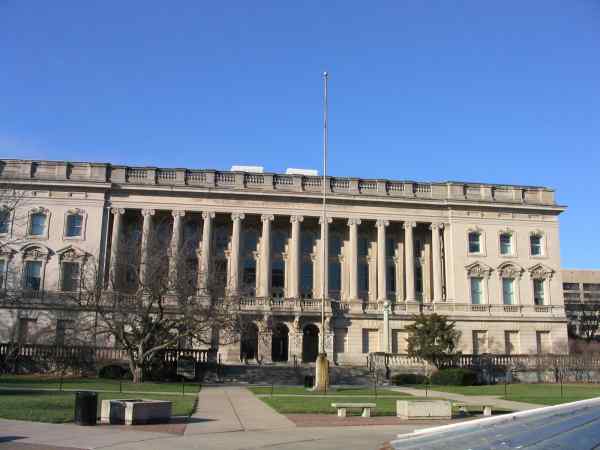 |
$6.9 Million National Institutes of Health Award to Build on
UW-Madison’s Innovative Research
MADISON – May 2, 2009
Governor Jim Doyle announced today that the University of
Wisconsin School of Medicine and Public Health (SMPH) has been
awarded a $6.9 million dollar grant from the National Institutes
of Health (NIH) to create an Alzheimer’s disease research
center.
“The University of Wisconsin-Madison is a national leader in
medial research, and I am proud that we will begin a new era of
discovery here in Madison,” Governor Doyle said. “The
Alzheimer’s research center will build on the innovative
approaches by the Wisconsin Alzheimer’s disease research team.
Together, they will continue to search for cures and treatments
for this heartbreaking disease that affects millions of
families.”
“The grant is a testament to the preeminent status and
remarkable resources and expertise of geriatric programs at the
University of Wisconsin,” said Dr. Sanjay Asthana, Duncan G. and
Lottie H. Ballantine Chair of Geriatrics and Professor of
Medicine at SMPH. “To receive NIH funding for the Alzheimer’s
center, we had to show a commitment to innovative research, from
basic to clinical, and demonstrate we can offer resources both
regionally and nationally.”
The five-year, $6,871,960 grant is funded by the NIH’s National
Institute on Aging. The Alzheimer’s Disease Research Center (ADRC)
will be based at the UW Section of Geriatrics and Gerontology at
the SMPH and the Geriatric Research, Education and Clinical
Center of the William S. Middleton Veterans Hospital. The
UW-Madison will be only the 17th institution in the U.S. to be
designated as an Alzheimer’s Disease Research Center.
“Innovative research is carried out most effectively when there
is a critical mass of talented researchers at an outstanding
medical research institution,” said Creighton Phelps, Ph.D., who
directs the ADRC program at the National Institute on Aging.
“The University of Wisconsin ADRC is a welcome addition to our
network of centers.”
Today, as many as 5 million Americans may have Alzheimer’s
disease. It is estimated that 16 million will be diagnosed with
Alzheimer’s disease by 2050. Alzheimer’s disease is the 6th most
common cause of death in the U.S.
The mission of the Wisconsin Alzheimer’s Disease Research Center
will be to develop novel strategies to
diagnose and treat Alzheimer’s disease at a stage when patients
have no symptoms. Development of such strategies will help
identify individuals at risk for Alzheimer’s and give patients
treatments that can either slow or stop the progression of the
disease.
The Alzheimer’s Disease Research Center will build on the work
of the geriatrics program at the UW-Madison’s Alzheimer’s
Institute, whose innovative programs include the Wisconsin
Registry for Alzheimer’s Prevention. The registry is an NIH-funded
longitudinal study of middle-aged, asymptomatic children of
Alzheimer’s disease patients. The program has enrolled more than
1300 participants for research on risks, causes, diagnosis,
treatment and prevention of Alzheimer’s disease, and has
provided scientific evidence that underscores the significance
of family history as a pivotal risk factor for Alzheimer’s
disease.
The National Institute on Aging (NIA) leads the federal
government effort conducting and supporting research on the
biomedical, social and behavioral issues of older people. For
more information on aging-related research and the NIA, go to
www.nia.nih.gov. The NIA provides information on age-related
cognitive change and neurodegenerative disease specifically at
its Alzheimer’s Disease Education and Referral (ADEAR) Center
site at www.nia.nih.gov/Alzheimers. To sign up for e-mail alerts
about new findings or publications, please visit either website.
|
| |
|
Governor Doyle Announces
Wisconsin 5th in Achieving Energy Efficiency Goals |
MADISON – May 2, 2009
Governor Jim Doyle today announced that Wisconsin is the fifth
best state in the country in terms of energy efficiency
accomplishments. The American Council for an Energy Efficient
Economy’s recently released report uses expert review of energy
efficiency spending and savings data to identify the 14 top states
in the nation. The report, “Meeting Aggressive New State Goals for
Utility-Sector Energy Efficiency: Examining Key Factors Associated
with High Savings,” examines specific factors in the top
performing states that may be important in determining how to
energy efficiency goals. |
 |
Wisconsin’s ranking is based on an analysis
of the Focus on Energy program, a statewide energy efficiency and
renewable resource program.
“The Focus on Energy program is consistently one of the best in
the country and we need to build on its strengths to help us
achieve the targets outlined in my Task Force on Global Warming,”
Governor Doyle said. “By charting a clean energy future, we’ll
save money, create jobs, help secure our world and improve our air
and water.”
The Governor’s Task Force on Global Warming proposed a major
increase in the state’s current energy efficiency program. Rather
than focusing on a spending cap, the policy recommends that the
state adopt annual targets for reducing electric load and natural
gas use. The targets for 2009 were to reduce electric load by
0.75% and natural gas use by 0.5% from what they would otherwise
have been without energy efficiency measures. The annual reduction
targets would increase gradually until they reach 2% for electric
load and 1% for natural gas use in 2015 and each subsequent year.
The task force is an integral part of Clean Energy Wisconsin,
Governor Doyle’s strategy to strengthen Wisconsin’s energy future.
This comprehensive plan moves Wisconsin forward by promoting
renewable energy, creating new jobs, increasing energy security
and efficiency, and improving the environment.
Since coming into office, Governor Doyle has worked to make
Wisconsin a leader in renewable energy. Governor Doyle’s plan for
energy independence includes: Generating 25 percent of our
electricity and 25 percent of the fuels for our cars and trucks
from renewable sources by the year 2025; capturing 10 percent of
the market share for renewable energy and bioproducts, and
utilizing Wisconsin’s tremendous capability for research to become
the country’s leader in making alternative energies more
affordable and available to all. |
| |
 |
Madison School
District Gets
$11.7 million Stimulus Windfall |
Madison - April 23, 2009
The Madison School District will spend the next
couple of months figuring out how best to spend
a two-year, nearly $11.7 million windfall in
federal stimulus money, Madison’s school
superintendent said Thursday.
More money for early-learning programs, possibly
including 4-year-old kindergarten, is one of
many ideas on the table, Superintendent Dan
Nerad said.
"We have to be deliberative about our planning,"
he said. "If we had the benefit of more time, we
could have a longer conversation. But we’re
going to have a good conversation, with a lot of
good ideas. We’ve been waiting for the
regulations, to make sure that we weren’t
putting things out there that couldn’t be
included in the final package."
School districts throughout the state received
on Thursday their two-year tallies from the $366
million in economic stimulus money coming to
Wisconsin schools, including more than $1.7
million for Sun Prairie, $1.5 million for
Middleton-Cross Plains and $1.2 million for
Verona.
The federal dollars must be funneled through two
existing programs: the Individuals with
Disabilities Education Act (IDEA), which funds
special education and early academic and
behavioral programs; and Title I, which targets
poor students and parent outreach.
Madison will receive about $6.2 million in
additional IDEA funds and $5.5 million in
additional Title I funds over the next two
years. The district currently receives about $6
million a year each for the IDEA and Title I
programs, said Erik Kass, assistant
superintendent for business services for the
Madison district.
The Title I funding is "crucial" said state
schools Superintendent Elizabeth Burmaster, "as
we are seeing increasing poverty rates across
Wisconsin," from 21.8 to nearly 35 percent in
the past eight years. The increases are
happening in rural as well as urban school
districts, she said.
The state Department of Public Instruction will
hold training sessions and Web seminars with
"suggested strategies" on how districts might
use their stimulus funds, Burmaster said.
Both Burmaster and Gov. Jim Doyle cautioned
against districts creating "funding cliffs":
using the short-term dollars to start new
programs that would have to be sustained later
by other funding.
"This money can really protect our property
taxpayers, and it also can add real quality to
our schools if used correctly," Doyle said.
|
| |
|
Wisconsin Faces
Doctor Shortages |
 |
| April 8, 2009 The Wisconsin Council on Medical
Education and Workforce said the greatest need is for
doctors specializing in family practice, internal
medicine, and hospitalists. In other words, doctors
serving as primary-care physicians. The report also
predicts that demand for primary-care doctors will
increase by 33 percent by the year 2020 and as much as
65 percent by the year 2030.
However, the increase in the number of actual physicians
lags far behind, and that's creating a huge gap in the
chain of supply and demand.
Dr. Charles Shabino, senior medical advisor for the
Wisconsin Hospital Association, said the need for
physicians will create serious problems in the future.
"We estimate that in Wisconsin today we are someplace
400 short in doctors of primary care and probably equal
numbers in specialties. We estimate this shortage will
grow for a number of reasons and to get to the point
that within that training cycle of 10 to 15 years from
now, that number may increase to the thousands here in
Wisconsin," he said.
That gap is of serious concern to some Wisconsin medical
experts, and should be to all Wisconsin residents.
Chances are it will eventually affect everyone's medical
care in the state of Wisconsin, officials said. They
said residents are on the brink of a crisis in health
care -- not just in Wisconsin but across the country,
WISC-TV reported.
Those same experts said the problem will be felt most
acutely in rural areas.
However, one doctor is taking on this challenge head-on.
By day, Dr. Aaron Dunn is a family practice physician in
Iowa County. Many evenings, however, he sees patients at
the Community Connections free clinic that he co-founded
in Dodgeville.
"From an intelligence standpoint, I like doing lots of
different things, and I really thrive on the breadth of
skills that a family medical training brings," said Dr.
Dunn. "From delivering babies to doing hospital work to
seeing patients in clinic, pediatrics, sports medicine,
geriatrics, the whole gamut."
Dr. Dunn's role as a primary-care physician in an
underserved area like Iowa County means regular workdays
of 10 hours or more.
"When you're in a rural area or in an underserved
community, the need dictates your hours," said Dr. Dunn.
According to the latest report from the Wisconsin
Council on Medical Education and Workforce, one of the
reasons driving potential doctors away from family
medicine is too many hours combined with too little
monetary compensation.
"I think all medical students who go into medicine
choose that profession because they want to help people,
but then a certain amount of reality confronts them,"
said Dr. Shabino. "One of those is that the average
medical student now, after he finishes medical school,
is nearly $200,000 in debt."
Dr. Dunn concurs.
"This is a hard sell. The cost of medical education is
way higher than even when I was in medical school and
that wasn't that long ago," he said.
Studies show primary-care physicians make four to five
times less than their specialist counterparts.
"We need to either generate some more funds to support
our primary care physicians or address the issue of this
huge debt that all the primary physicians have at the
time they're making this choice of what to do in terms
of specialty," said Shabino.
"I'll be paying off my debt for a long time," said Dunn.
"For a long time. But with that said, I still live
comfortably and have a happy family and we have no
complaints financially."
Some individual practices are starting to offer
incentives like signing bonuses and loan repayment
programs. Medical organizations are lobbying the state
to extend tuition reimbursement for primary care
providers who stay in Wisconsin.
This brings up the next obstacle facing Wisconsin:
Getting doctors to stay here. Currently more than 60
percent of Wisconsin medical students leave the state
for residency, WISC-TV reported.
"We know that the highest predictor of where physicians
will practice is location -- where they do their
residencies," said Shabino.
"We do know that about half end up back in Wisconsin
eventually practicing, but again we know that if they're
gone for their first three, five, or seven years of
practice before they return, that's lost opportunity for
us in Wisconsin to be meeting the needs of residents,"
said Dr. Bryon Crouse, director of the Wisconsin Academy
for Rural Medicine.
That's a need growing faster than doctors are being
trained.
"It currently takes between 8 to 12 years to educate a
physician from the time they graduate college to the
time they're actually ready to go out and practice. That
means that if we're going to address this problem, we
need to address it today knowing we won't see the
benefit of that for a dozen years or so," said Crouse.
For Dunn, though, if he had to do it all over again, he
said he wouldn't do anything different.
"You can do primary care and not be burned out and have
a family and have a social life and be happy," said
Dunn. "You can make a good living and you can really
thrive in a health care system."
Speaking of wage discrepancies among doctors, an
anesthesiologist makes more than $320,000 a year.
An OB/GYN with more than one year's experience makes
around $247,000, while a psychiatrist makes $180,000.
Family practice doctors make an average of $156,000.
There has been a national call for all medical colleges
to increase class size by 30 percent, which the
University of Wisconsin School of Medicine is gradually
doing.
But to address the shortage more specifically, the
school developed the Wisconsin Academy for Rural
Medicine program.
Through WARM, the UW tries to identify students that may
be a good candidate to work in a more rural setting.
"Some of that is coming from rural communities, some of
that is students that really engage in community life
and community support. Even back in their junior high
and high school eras, we find that who really engages in
the community, things like that will help predict who
returns to rural practice," said Dr. Crouse.
Crouse also points out that they really want to focus on
students who will stay in a rural area long term and
really become part of the community.
Another part of this solution is to fund more
residencies in the state, WISC-TV reported.
Residencies are paid by Medicare, and statewide medical
groups are lobbying Congress for more money to pay for
more medical residents.
Baby Boomers also are playing into the doctor shortage:
In the early 1970s there was an expansionary movement
when the federal government grew the number of
physicians by 30 percent.
Now, those doctors are retiring by the droves. And at
the same time the aging baby boomer population needs
more medical services.
|
| |
|
Big Job Cuts,
Gains
in Wisconsin
Communities |
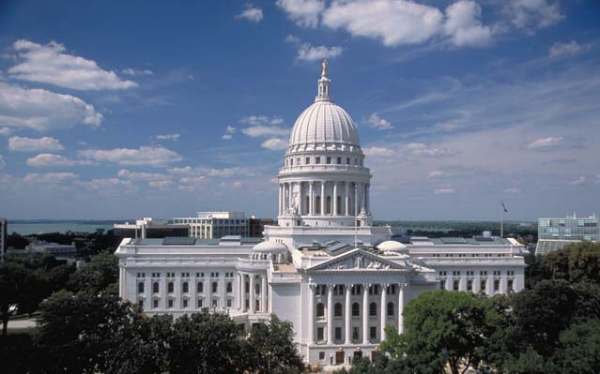 |
By Marge
Pitrof
April 2, 2009 |
WUWM |
Milwaukee, WI
Two Wisconsin
communities are
going to be hit
hard by layoffs.
The Kohler
Company
announced today
that it's laying
off 455 workers
because of the
continuing slump
in new home
sales. Kohler
makes kitchen
and bathroom
products. The
company, with
its 6,300
workers, is
Sheboygan
County's largest
employer and one
of the biggest
non-government
employers in
Wisconsin.
Kohler has given
pink slips to
650 workers
since October.
In Columbus, the
fabricating
plant at
Columbus Steel
has announced
plans to close
permanently by
the end of July.
The move will
impact nearly 90
employees,
although some
may be able to
transfer to a
different
company
facility.
On the positive
side, Wisconsin
Rapids is
gaining a
factory that's
expected to
create 400 jobs.
The Energy
Composites
Corporation
plans to begin
construction of
a 350,000 square
foot plant that
will produce
blades for wind
turbines. The
parent company
already has
another factory
operating in
that community.
© 2009 Board of
Regents
University of
Wisconsin System
- WUWM FM |
| |
|
Wisconsin Do Not Call List
Grows to 1.6 Million |
 |
State of Wisconsin officials stated that Wisconsin’s telemarketing "No Call List" now has more than 1.6 million numbers, more than ever before due to the new law allowing residents to sign up cell phone numbers in addition to land lines.
Last year’s count at this time was 1,098,055. More than 421,860 mobile lines are now on the list, with 44,000 cell numbers added to the list in one day, the Wisconsin Department of Agriculture, Trade and Consumer Protection said.
People who sign up by Feb. 28 will have their numbers on the quarterly no call list sent to telemarketers in April. Wisconsin residents can sign up at NoCall.Wisconsin.gov or by calling 1-866-9NO-CALL (1-866-966-2255) toll-free in Wisconsin.
|
| |
|
Wisconsin banks
lose $4 million in
2008 |
 |
Madison - Feb.
28A tough fourth
quarter contributed
to a net $4 million
cumulative loss in
2008 for Wisconsin's
249 commercial banks
regulated by the
Federal Deposit
Insurance Corp.,
down from total net
income of $1.23
billion in 2007.
Last year's biggest
losers were M&I
Marshall & Ilsley
Bank of Milwaukee,
which posted a
$552.8 million loss,
and AnchorBank of
Madison, which had
an $86.5 million
loss.
Losses at both M&I
and Anchor were
related to real
estate investments.
Investments in
Arizona and on the
west coast of
Florida caused
problems for M&I
while AnchorBank was
plagued by its
investments in
bankrupt Wisconsin
condominium
projects.
Wisconsin's most
profitable bank last
year was Associated
Bank of Green Bay
with $182.3 million
in net income, down
from $280.1 million
in 2007.
Other profitable
banks included FPC
Financial of
Madison, the credit
arm of John Deere,
with net income of
$41.6 million, and
Johnson Bank of
Racine with net
income of $19.8
million.
Forty Wisconsin
banks reported
overall losses in
2008 and 60 had
fourth-quarter
losses. Area banks
with 2008 losses
included Evergreen
State Bank of
Stoughton, $2.4
million; Settlers
Bank of DeForest,
$1.1 million; Town
and Country Bank of
Watertown, $624,000;
Home Savings Bank of
Madison, $414,000;
First Bank of Tomah,
$331,000; Mid
America Bank of
Janesville,
$249,000; and Milton
Savings Bank,
$148,000.
The percentage of
non-performing
assets to total
assets at state
banks rose to 2.38
percent last year,
up from 1.41 percent
in 2007. The
percentage of net
charge-offs to loans
rose to 1.59 percent
from 0.37 percent
the previous year.
Nationally, the FDIC
said the banking
industry earned
$16.1 billion in
2008, the smallest
annual net income
since 1990. |
| |
|
Wisconsin Imposes
Download Tax |
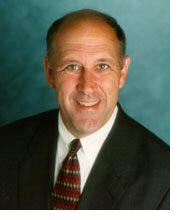 |
| Madison
- February 28, 2009
Gov. Jim Doyle approved
imposing a 5 percent
sales tax on a number of
digital goods -
including music,
ringtone and video game
downloads - Feb. 19 as
part of a bill aimed at
narrowing a $6 billion
dollar state budget
deficit. The new tax
will go into effect Oct.
1.
"One of the problems
we have with the tax
code is that it doesn't
grow with the economy,"
said state Sen. Kathleen
Vinehout (D-Alma).
"Right now we're moving
into a whole new world
of products that are
transmitted over the
Internet.
"It's part of keeping
up with the times - part
of modernizing our tax
code."
State Rep. Scott
Suder (R-Abbotsford)
disagreed and said the
tax will "target those
who can least afford
it."
"It's basically
taxing students to fill
in the Doyle budget
shortfall," Suder said,
"and I think that's
unfair."
The digital products
sales tax is expected to
raise about $10.9
million for the state
between 2009 and 2011,
according to a summary
of the budget deficit
repair bill.
The summary
statedthat a 5 percent
sales tax would be
imposed on "specified
digital goods" such as
digital audio works -
which include ringtones
- digital audiovisual
works and digital books.
Other now-taxable
items, if transferred
electronically, include
greeting cards, artwork,
periodicals and video
games, according to the
legislation summary.
"I could see where it
would be beneficial …
because of the recession
and everything," said
freshman James Stupka,
who said he downloads
more video games than
music, "but I personally
wouldn't like it."
Stupka said he also
wondered how the state
could enforce the new
tax.
"It just doesn't make
sense to me," he said.
State Rep. Jeff Smith
(D-Eau Claire) had
similar questions about
the state government's
ability to monitor the
new levies.
"I don't know how we
as a government are
going to, at this stage
anyway, audit somebody's
downloads so that we
know what they owe in
taxes," Smith said.
Echoing Vinehout's
comments about the need
to update the state's
taxes, a state
Department of Revenue
spokesperson said the
new music and ringtone
download taxes are meant
to bring the state's tax
law up to speed with the
growing technology.
"I think it's more
about the modernization
of the tax law to keep
up with where technology
is," said Jessica
Iverson, who added the
digital sales tax will
"level the playing
field" for businesses in
the state who have to
compete with other
companies that don't
have to charge sales
tax. © Copyright 2009
The Spectator |
| |
|
|
|
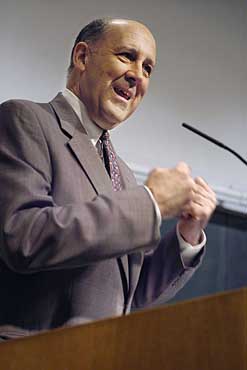 |
Doyle Closing Eight Welcome Centers |
MADISON, WI - Friday, February 27, 2009
- According a recent Milwaukee Journal /Sentinal
Online article, eight Wisconsin Welcome
Centers, where tourists can receive
information about state parks and other
visitor's attractions, could be closed
by May under Wisconsin Govenor Jim
Doyle's budget proposal.
Closing the Centers will help the
Wisconsin Department of Tourism trim
$1.7 million from its upcoming two-year
budget. A $1.2 million savings may be
realized by discontinuing the service.
Governor Doyle proposed a $29 million
department budget.
Welcome Centers in Beloit, Hudson,
Hurley, Kenosha, Kieler, La Crosse,
Marinette and Superior are targeted for
closing. Collectiviely they have eight
full-time and five part-time employees,
along with 30 seasonal workers,
according to the department's budget
summary. The centers include rest stops
operated by the Department of
Transportation, which will remain open,
said Mike Goetzman, spokesman for that
agency.
According to the report, fewer people
have been using the centers in recent
years. Many travelers have been getting
information from the Internet instead.
The department's Web site, http://travelwisconsin.com,
has seen consistent site hit increases
over the past five years, according to
the budget summary.
According to the Milwaukee Journal/Sentinal
Online, shutting down the Welcome
Centers, would save money that could be
used on other marketing efforts.
Currently the Department makets through
their own Web site and also pays for ads
TV, radio and other media to promote
Wisconsin.
Doug Neilson, president of Visit
Milwaukee, said the Centers would be
missed. He said the Centers promote the
Milwaukee area to tourists and other
visitors. But he understands, however,
why department officials have proposed
closing them.
Brochures also can typically be found in
restaurants, convenience stores and
other retail businesses throughout
Wisconsin's tourism destinations, and at
rest stops operated by the
Transportation Department.
But the Welcome Centers, the first of
which opened in 1962, provide more than
just printed information, said John
Gulig, who manages the Kenosha center.
They also offer a much-needed dose of
human interaction during a time when
people are being pushed into the
Internet, voice mail and other soulless
endeavors, he said.
"They still want that personal touch,"
said Gulig, who's worked at the center
for 14 years. "People want to talk to
people." |
| |
|
Economy Pinches Wisconsin Restaurants
|
 |
LaCrosse - January 26, 2009
This members of the Wisconsin Restaurant
Association are meeting this week in La
Crosse for their quarterly meeting.
The group discusses things like minimum
wage laws, menu labeling and, of course,
ways to keep diners coming in.
Association President Ed Lump said
that as the economy worsens and more people
tighten their wallets, Wisconsin restaurant
owners are feeling a pinch when it comes to
running their businesses.
"Frankly, it's a little flat, consumers
have pulled back, and that is putting a
stress on restaurants. " Lump stated.
Lump went on to say that "there are still
people that are dining out fairly
frequently. So, there's still traffic, but
obviously we're still going to be very
concerned about that."
Lump adds that Wisconsin restaurants are
facing some challenges, but that overall the
industry is very resilient and able to adapt
to changing demands.
|
| |
|
Democrats have seized control of Wisconsin state
government. Now what? |
 |
Like their counterparts in Washington, D.C.,
Wisconsin Democrats are beginning 2009 with a
powerful case of Be Careful What You Wish For.
The good news: With the new Legislature's
inauguration earlier this week, state Dems now
control both the Legislature and the executive
branch for the first time in more than two decades.
The bad news: They face the worst political and
economic conditions in modern memory.
After capturing the governor's mansion in 2002 and
the state Senate two years ago, the Democrats
managed to reclaim the Assembly last fall. They now
have an 18-15 majority in the Senate and a 52-46
edge in the Assembly, with one independent. |
That alone fulfills a dream for state Rep. Mark
Pocan (D-Madison), the new Assembly co-chair of the
Legislature's Joint Finance Committee. Pocan was
elected in 1998, when Republicans ran the show.
So is Pocan looking forward to the coming session?
"Ninety percent yes, 10% no," he says.
The 90%: "We've finally got a chance to be in the
majority" — controlling the Legislature and the
governor's mansion for the first time since 1986.
"We can finally, with the Senate and the governor,
pass some good legislation.
"The 10% is, now that I've put my time in on Joint
Finance, hoping to at some point get exactly what I
got, we're facing a $5.4 billion deficit."
That deficit seems certain to stall significant
parts of the Democratic agenda in the next couple of
years, crowding out big-ticket items from the
progressive wish list.
So, don't expect the Democrats to pass their
ambitious Healthy Wisconsin program mandating
universal health insurance coverage. "It is really
almost impossible for us right now to even look at
that type of sweeping health care reform," says
departing state Rep. Sheldon Wasserman (D-Whitefish
Bay), a physician and key proponent of the plan.
On other issues, the notion that bringing Democrats
to power will end gridlock may prove illusory.
Bill Kraus, a moderate Republican who has long
backed measures to boost public funding of campaigns
and require greater disclosure of outside money
spent to elect candidates, is wary about the
prospects for long-promised reform.
"My history has been one of high expectations and
low fulfillment," says Kraus, a former aide to
Republican Gov. Lee Dreyfus. Democrats and
Republicans alike have failed him, so Kraus is
keeping his expectations in check.
Late last year, as the state's budget deficit became
public, Gov. Jim Doyle talked down plans to revive
the health-care overhaul. The guv pointed out that,
between the Democratic gains in Congress and victory
of President-elect Barack Obama on a promise to make
health care reform a national priority, the state
may be off the hook, at least for now.
That's a spin we could see more of: Wisconsin
doesn't have to address longstanding issues because
the ball is now in Washington's court.
But a number of state Democrats won election by
linking Republican opponents to a do-nothing,
GOP-controlled Assembly. What goes around comes
around, unless the new bosses can prove they can
govern as well as they campaign.
Expect Democrats to reach first for low-hanging
fruit, passing long-stalled initiatives to put a
progressive stamp on state policy without burdening
the state treasury. "Policy issues that don't cost
money are going to be advanced very quickly,"
predicts Wasserman, who narrowly lost his bid to
unseat Republican state Sen. Alberta Darling.
And while the soon-to-be-born Obama administration
may get state Democrats off the hook on some issues
like health care, skilled leadership will be needed
for Wisconsin to capitalize on the president elect's
agenda.
Incoming Majority Leader Tom Nelson (D-Kaukauna) and
Assembly Speaker-designate Mike Sheridan
(D-Janesville) met in Washington late last year with
Obama's transition team as it was formulating plans
for its massive federal economic stimulus package.
Nelson is hopeful that Obama's plan could relieve
some of the pressure on the state's deficit.
"It is clear," says Nelson, "that a significant part
of that package will include critical road and
bridge and waterway projects as well as investment
in education and health care." Wisconsin must make
sure it "is prepared to receive those investments."
Perhaps as urgent a question as what the Democrats
will do is how they'll do it. In that respect, the
Legislature's two houses seem to be taking a
different tack. While Senate Democrats put largely
experienced members in leadership posts for the
coming session, the Assembly opted for fresh faces.
That's in part because the lower house has more
fresh blood to draw on.
"More than half the Democrats in the Assembly have
been here four years or fewer," says Spencer Black
(D-Madison), a past minority leader who could have
laid legitimate claim to a senior leadership post.
"I think it's good that many of our leaders are not
the old guard."
Black says that, during the years that they
controlled the Assembly, Republicans favored
hard-nosed partisan tactics and "were often very
vindictive against Democrats." One former speaker,
John Gard, even cut the number of staff positions
allowed for each Democratic legislator. (The move
was ultimately rescinded.)
Gard's successor, Mike Huebsch, "did change the tone
somewhat, to his credit," Black allows. Still, he
says Huebsch dug in his heels during budget talks in
2007, blocking such Democratic initiatives as a
surtax on oil companies, a special hospital tax, and
the Healthy Wisconsin proposal. The budget passed
nearly four months late, a dubious national record.
Wasserman predicts budgets will pass much more
easily with the governor and both houses of the
Legislature all coming from the same party.
"You're going to have the individual leadership of
both houses working with the governor behind the
scenes," he says. While Democrats won't just
rubber-stamp the next Doyle budget, "you will have a
product that's pretty well finished when it comes
out of the governor's office. That is a huge change
from previous years."
And will Democrats seek to freeze out Republicans
the way they believe they were frozen out?
Black doesn't think so. "What I'd like to see is
Democrats be very strong in terms of our program and
what we achieve," he says. "But stylistically I
would hope we wouldn't be as partisan and,
sometimes, quite frankly, as nasty as the
Republicans were."
Way to set a less partisan tone!
GOP leaders didn't respond to several requests for
comment. But a press release issued early last month
by Rep. Steve Nass (R-Whitewater) suggests the
sniping isn't stopping anytime soon.
Nass blasted Democratic Sen. Spencer Coggs for
unveiling an "extremist liberal agenda" that
included mandatory housing aid for low-income
families and expanding state requirements to buy
from minority-owned businesses.
"Voters don't want Wisconsin turned into the San
Francisco of the Midwest," Nass declared.
Nelson, meanwhile, warns his fellow Democrats not to
get cocky about their recent win.
"I don't so much interpret last November's election
results as a vindication of Democratic principles,
but as a wholesale rejection of partisan politics,"
says Nelson. "And Democrats happen to be the party
that has been given the opportunity...to help lead
this state in a new era of politics."
For many in Madison, the choice of relative newcomer
Mike Sheridan as speaker is one sign that the Dems
really do want to change how things are done.
Sheridan, a former United Auto Workers chief at the
General Motors plant in Janesville, vows to draw on
his background in collaborative labor relations to
work with the GOP opposition.
Already, Sheridan has impressed others by building a
rapport with colleagues from both parties. Says
Wasserman, "He brings an easygoing style of
inclusiveness to the table."
Sheridan gives a concrete example, saying he
deviated from past practice in declining to "turn
the building upside down and throw the other party
out of their offices" when control of the Assembly
switched parties. This, he adds, also saved the
state many thousands of dollars.
So is a new era of bipartisanship about to dawn?
Bill Kraus, for one, is skeptical.
"If you want to see the minority leaders of either
party, walk in, because they're not busy," he says.
"This is the majority's game, and everybody knows
it. That's why they fight to get in the majority."
The Democrats' to-do list
Key items on the majority party's agenda:
* Plug the state's $5.4 billion budget gap. Expect
this to dominate the opening weeks of the 2009
legislative session. It will require a mix of
painful spending cuts and new revenue streams,
likely including increased fees and taxes.
*
* Expand health-care availability. While sweeping
programs like the Healthy Wisconsin plan are
unlikely, the Dems do see opportunities for more
incremental measures. Already, the state is blending
the BadgerCare health insurance program for the poor
with county medical assistance programs so childless
adults can get coverage under BadgerCare.
* Make meds more affordable. One key component,
which won't cost the state much, if anything, is to
roll back the state's minimum markup law for drugs.
This will allow chain stores like Wal-Mart to
implement programs they've introduced elsewhere
selling generic drugs at deeply discounted prices.
* Stand up to outsourcing. The Dems hope to cut off
state contracts with "companies that ship jobs
overseas," as a Democratic list of talking points
puts it. A bill to do this passed the Senate
unanimously in the last session and failed along
party lines in the Assembly.
* Boost the minimum wage. This is a priority of
Senate Majority Leader Russ Decker, who has
introduced a bill to boast the state minimum wage
from $6.50 today to $7.60 in June, indexing it to
inflation thereafter.
* Stimulate the economy. This includes a proposal to
boost job training through the Wisconsin
Manufacturing Extension Partnership and another
offering tax credits for green-energy development.
But such initiatives may be difficult given the
state's need to make deep cuts to balance its
budget.
Leaders of the legislature
Mike Sheridan, Assembly Speaker
D-Janesville
Age: 50
Background: Elected to Assembly 2004; former
president, United Auto Workers Local 95.
Despite his short tenure in the Legislature — just
four years — Sheridan has earned the respect and
friendship of more senior members. He pledges to
work cooperatively with Republicans as well.
"My goal is, we reach across party lines. I'm hoping
my Republican colleagues will work with us,"
Sheridan says. "When I was in the union we worked
with the company. That's the only way we could get
things done."
But Sheridan vows not to shy away from confrontation
if circumstances require it — another lesson from
Local 95, which represents workers at a number of
shops besides the GM plant. "There were companies
that just refused to work together. They wanted to
fight," he says. "We can do it both ways."
Tom Nelson, Assembly Majority Leader
D-Kaukauna
Age: 32
Background: Elected to Assembly 2004; former
technical college teacher and political consultant.
Nelson, who edged out Milwaukee Rep. Pedro Colon for
the majority leader's post, is known for his
tenacity.
In his three Assembly races, he reckons he's knocked
on 84,000 doors. And he went door-to-door for some
20 Assembly candidates starting last summer. "Tom
Nelson is a worker," says one colleague.
He can also be aggressive, with a flair for the
dramatic. WisPolitics.com notes that when Nelson
first ran in 2004 against incumbent Republican Becky
Weber, he threatened to sue Weber over campaign ads
he charged were false. And in the summer of 2007
Nelson drew national notice with a five-day
"sleep-in" at his desk to protest the state's budget
impasse.
Jeff Fitzgerald, Assembly Minority Leader
R-Horicon
Age: 42
Background: Elected to Assembly 2000; former Beaver
Dam city council member; former Chicago Mercantile
Exchange futures trader.
Fitzgerald, majority leader in the last session,
owes his new title to former Speaker Mike Huebsch's
decision not to seek the minority leader's post. He
also successfully fended off a challenge from Scott
Newcomer (R-Hartland), who sought the post promising
to take "a new direction."
Fitzgerald didn't respond to Isthmus' requests for
an interview, but Democrat Spencer Black
characterizes the contest as one in which the
"hard-line, line-in-the-sand" Fitzgerald beat a
moderate.
"You're going to see a fight throughout the session
between the hard right wing and the more moderate"
elements of the party, Black predicts.
Russ Decker, Senate Majority Leader
D-Weston,
Age: 55
Background: Elected to Senate 1990; former
bricklayer and building trades union leader.
Decker was installed as majority leader in 2007,
replacing Judy Robson (D-Beloit) right after the
state budget passed. Along with Speaker Sheridan,
Decker brings a working-class aura to the Democrats'
legislative leadership, evidenced by his advocacy
for a new hike in the state minimum wage.
But Decker — who didn't return Isthmus' calls —
comes off as a classic political dealmaker,
Democrat-style. Progressives were dismayed when
Decker fast-tracked a controversial cable franchise
bill that gave AT&T entrée into the cable TV
marketplace while phasing out public-access
requirements. Wisconsin Democracy Campaign noted
that he got $23,641 in campaign cash from interests
backing the bill.
Fred Risser, Senate President
D-Madison
Age: 81
Background: Elected to Senate 1962, after six years
in the Assembly; previously held president's post
1979-1993, 1996-1998, 1999 and 2001.
A consistent voice for clean government and
progressive positions, Risser is the nation's
longest-serving state legislator and the fourth
generation in his family to serve as a lawmaker.
But Risser's long tenure and seniority have not
given him undisputed clout, much to his annoyance.
He recently got the word from Majority Leader Decker
that he can serve only one more year on the state
Building Commission — a post Risser has held for 40
years due to his interest in architectural
preservation.
Scott Fitzgerald, Senate Minority Leader
R-Juneau
Age: 45
Background: Elected to Senate 1994; Lieutenant
colonel and public affairs officer, U.S. Army
Reserve.
Fitzgerald, one of the few current legislative
leaders to retain his post from the last session,
didn't return calls from Isthmus. But the bio on his
campaign website proclaims him "one of the state's
most stalwart conservative leaders." He prominently
backed the state constitutional amendment banning
gay marriage and civil unions, as well as
conservative anti-tax policies. (The bio, not
updated since the election, also asserts: "Under
Scott's leadership, Senate Republicans are poised to
pick up seats in the 2008 elections and regain
control of the State Senate.")
With Fitzgerald's brother as Assembly minority
leader, Republicans will likely maintain a unified
front as they maneuver to fend off or co-opt
Democratic initiatives.
|
| |
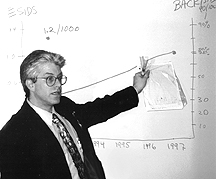 |
Foldy to lead Wisconsin’s
Public Health Division |
Friday, January 2, 2009,The Business
Journal of Milwaukee
Former Milwaukee health commissioner Seth Foldy has
been selected to become the new administrator of the
Division of Public Health at the Wisconsin
Department of Health Services, agency secretary
Karen Timberlake said Friday.
Foldy served as health commissioner for the city of
Milwaukee from 1998 to 2004. As administrator of the
Division of Public Health, he will also serve as the
State Health Officer.
“Dr. Foldy brings a record of leadership and a
wealth of experience on public health issues to the
Department of Health Services,” Timberlake said in a
statement. “He will be an asset to the Department
and our many public health partners around the
state.”
In recent years, Foldy has co-founded the Wisconsin
Health Information Exchange (WHIE) which provides
real-time patient information to emergency
department physicians and public health authorities
in Milwaukee County. He has also served as medical
director of Health Care for the Homeless of
Milwaukee since 2005.
All contents of this site © American City Business
Journals Inc. All rights reserved. |
| |
Decker Opposes
D.U.I. Legislation |
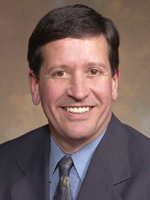 |
Wisconsin Senate
Majority leader opposes some drunken driving
legislation under consideration
December 31, 2009
Senate Majority Leader Russ Decker said he opposes
key elements of legislation under development that
would crack down on drunken driving across the
state, although his chamber would give them
consideration.
The Weston Democrat said in an interview Wednesday
that making a third drunken driving offense a felony
would be "too severe," while allowing sobriety
checkpoints is undemocratic.
"I just don't think stopping somebody without just
cause is the way for us to work in a democracy," he
said.
On third offense drunken driving, Decker said, "You
could get one at 20 (years old), one at forty, and
one at 60. That spans 40 years. Does that make you a
felon? No."
A spokeswoman for Decker later clarified that the
Senate leader would support making a third drunken
driving offense a felony if three charges occurred
within a shorter time frame, such as 10 years as
opposed to 40 years.
Currently in Wisconsin, a fifth drunken-driving
offense is a felony and the state doesn't allow
police to set up sobriety check points.
Decker also expressed skepticism about requiring
ignition locks for the vehicles of drunken drivers,
saying judges have failed to exercise the discretion
they now have to impose them. And he said
criminalizing a first drunken-driving offense, now a
misdemeanor, would cost taxpayers money at a time
the state is facing a $5.4 billion budget shortfall.
But he said Senate Democrats will take a look at
those and other ways to combat drunken driving.
Kari Kinnard, executive director of the state
chapter of Mothers Against Drunk Driving, said a
bipartisan group of lawmakers is working on several
bills to combat drunken driving, including those
allowing checkpoints and requiring ignition locks,
which she said would be most effective.
A "groundswell from society" is demanding state
lawmakers get tougher on drunken drivers, and Decker
will hear from them, she said.
"I think he's going to feel a lot of pressure,"
Kinnard said of Decker. "We'll feel some resistance
from him but he'll feel a lot of pressure."
Decker said more attention needs to be paid to
repeat drunken drivers. But Kinnard said,
"Historically that's what Wisconsin's done and it
doesn't work."
Decker's comments come amid increased attention on
drunken driving in the state, but raise questions
about whether the Legislature will change drunken
driving laws in the 2009-2011 session, which begins
next week.
Last year, Gov. Jim Doyle signed a bill that
increased penalties on repeat drunken drivers.
Wisconsin's Gannett newspapers and the Milwaukee
Journal Sentinel have published series on the
state's drinking culture and its relatively lax
drunken driving laws.
And a UW Health-led coalition is urging the state to
revamp drunken driving laws.
Rep. Jeff Wood, I-Bloomer, was arrested last month
for drunken driving, bringing even more attention to
the issue. He is among several lawmakers, including
Decker, who have at least one drunken driving
arrest.
Doyle, a Democrat, has said he supports making third
offense drunken driving a felony, spokesman Lee
Sensenbrenner said. Doyle also would sign a bill
requiring ignition locks if the Legislature passed
it, Sensenbrenner said, and he would consider
supporting legislation criminalizing first offense
drunken driving and allowing for sobriety
checkpoints so long as they aren't discriminatory.
Incoming Assembly Speaker Mike Sheridan,
D-Janesville, said in a statement:
"We have been called to action on this issue by our
constituents, and plan to take action in the session
ahead. Assembly Democrats will meet in January to
discuss our package of bills, to address the problem
of drunk driving. We will consider stiffer penalties
for drunk drivers, innovative probation programs,
including ignition interlock devices, support for
educational and rehabilitation programs and other
proposals. I feel it is critically important that we
pass thoughtful legislation; we have to get this
right the first time. The stakes are high, with
public safety on the line." |
| |
| |
|
Wisconsin Man Glenn Martin
Invents First Usable Jetpack |
Glenn Martin has
unveiled at the Experimental Aircraft Association's
AirVenture in Oshkosh, Wis. the world's first jetpack which
promises to actually be usable. The contraption can
theoretically fly for 30 minutes, and rise to a height of
8,000 feet. However, the Martin Jetpack was only used at
very low heights, around a few feet, for safety reasons. In
the upcoming months, its creator wants to fly it at 500
feet.
Inventor Glenn Martin wants to sell the devices for
$100,000. The Martin Jetpack weighs 250lbs and is 5 feet
tall. Power is provided by piston engines, not jet engines,
but the twin blades are encased in special ducts. The
200-horsepower gasoline engine also makes a lot of noise, it
appears.
Since 1998, Martin managed to secure
investments and has a staff of 12. Its corporate
partners are from New Zealand. Although having a background
in pharmaceutical sales and biotech rather than engineering,
jetpacks have preoccupied Glenn Martin for almost thirty
years.
A pilot license is not necessary to fly a Martin Jetpack. It
is classified an ultra-light aircraft by the FAA. However,
buyers will be required to take 15 hours of flight training
as well as a safety screening. Those who do not pass will
have to give up their jetpack and they'll receive their
money back.
Each jetpack is equipped with a ballistic parachute, but it
is by far more dangerous than most other current flying
options, Glenn Martin admits, but hopes to sell between 10
and 20 devices by this time next year.
The first jet packs, as most of today's technical
achievements, were built by German scientists during World
War II. It consisted of two wearable shortened Schmidt pulse
jet tubes attached to the body, one in front and one in the
back. It was designed to allow jumps of up to 180 ft at low
altitude, under 50 ft, in order to cross minefields, barbed
wire obstacles, and bridgeless waters. It was designed for
engineer units and not troops.
The only other working jetpacks today are hydrogen
peroxide-powered ones, which allow for flights under 30
seconds. The U.S. Defense Advanced Research Projects Agency
(DARPA) designed a jet pack which tested well in 1969, but
after the chief designer of the Bell Jet Flying Belt died
the same year, the project was abandoned. |
| |

|
Web Posted: 7/28/2008 2:09:51 PM

AARP Wisconsin applauds the recent passage
of a
resolution authored by Wisconsin Lt.
Governor Barbara Lawton and approved
unanimously by the National Lieutenant
Governors Association (NLGA) that supports
making affordable, quality health care
available to all Americans. At
Lawton’s request,
AARP contacted each of its state offices
across the country asking them to urge
their lieutenant governors to support the
resolution.
The
resolution, passed at the NLGA’s
annual meeting, earned co-sponsorship from
a
bipartisan coalition made up of more than
half of the nation’s lieutenant governors.
NLGA
members pledged to support bipartisan
legislation that employs multiple
strategies to
provide access to high quality, affordable
health care; increase awareness of
personal
opportunity and responsibility to protect
personal health, improve the value of
every
health
care dollar spent, and ensure that
businesses, government, and individuals
all
contribute to an improved American health
care system.
AARP
has launched a similar initiative called
Divided We Fail, which is
a national effort to raise the voices of
millions of Americans who are tired of
letting
Washington
gridlock stand in the way of affordable,
quality health care and long-term
financial security.
“The lieutenant governors are talking
about the exact same issues that Divided
We Fail is focusing on,” said AARP
Wisconsin State Director D’Anna Bowman.
“Too many
Wisconsin families – just like
millions of others across the country –
are concerned about their health care.
Families want peace of mind and
assurance that they won’t outlive their
savings or have a health emergency that
ruins them financially.”
 Printed Wednesday, July 30, 2008
Printed Wednesday, July 30, 2008
|
|
|
Wisconsin governor criticizes GOP
energy ad |
 |
MADISON, Wis.
Gov. Jim Doyle says a new Republican ad that rips
Democratic presidential hopeful Barack Obama's stance on
energy conservation distorts reality.
The Republican National Committee is running an ad in
Wisconsin that says Obama offers no new solutions while
GOP presidential candidate John McCain supports
alternative energy, conservation, more domestic
production and suspending the gas tax.
Doyle is a Democrat. He says the ad distorts reality
because none of McCain's proposals will have any effect
on gas prices.
He says Obama has a plan for alternative fuels and a
strong economy built around them.
RNC spokesman Chris Taylor says the ad accurately
portrays Obama's energy policies. The Wisconsin
Republican Party says Doyle and Obama are on the
defensive.
|
|
|
|
| Origin of the
Name Wisconsin Chippewa/Ojibwa/Anishinabe word, "Ouisconsin,"
that means "grassy place," or "gathering of the waters." |
|